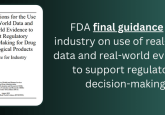Real-world evidence that SGLT2 inhibitors reduce cardiovascular risk more than DPP-4 inhibitors in people with type 2 diabetes, irrespective of glycemic control

A new-user comparative effectiveness and safety study of over 140,000 adults with type 2 diabetes has gathered real-world data that show use of SGLT2 inhibitors was associated with 54% lower risk of hospitalization for heart failure and 15% lower risk of a composite MACE outcome compared to use of DPP-4 inhibitors, regardless of baseline glycemic control.
A group of researchers from Brigham and Women’s Hospital and Massachusetts General Hospital recently published Comparing effectiveness and safety of SGLT2 inhibitors vs DPP-4 inhibitors in patients with type 2 diabetes and varying baseline HbA1c levels in JAMA Internal Medicine. The team performed a new-user comparative effectiveness and safety research study on deidentified health records of over 140,00 adults with type 2 diabetes (T2D) from the database of US health insurance company Optum Clinformatics Data Mart. They found that use of sodium-glucose cotransporter 2 inhibitors (SGLT2i) was associated with a 54% lower risk of hospitalization for heart failure and 15% lower risk of a composite outcome of major adverse cardiovascular events (MACE) compared to use of dipeptidyl peptidase 4 inhibitors (DPP4i), and these results were consistent across varying levels of glycemic control.
T2D affects more than 11% of the US population. The disease is associated with increased morbidity and mortality from CV and kidney disease, and mitigating the risk of these complications is a priority in its management. Whilst SGLT2i were first prescribed as antihyperglycemic agents, they have since been shown to have cardiorenal protective effects. Since SGLT2i induce a glycosuric response by reducing kidney tubular glucose reabsorption, there have been concerns that the safety and efficacy of SGLT2i in this application might be affected by levels of hyperglycemia control in people with T2D. DPP4i were selected as comparator in this study as they are an established choice for long-term prevention of adverse CV outcomes in people with T2D and are free from glycosuric adverse effects.
Using the Optum Clinformatics Data Mart Database, investigators amassed deidentified health records of a cohort of 144,614 adults with T2D who initiated treatment with a SGLT2i (60,523) or DPP4i (84,091) between April 2013 and June 2021. The study had two primary effectiveness outcomes over a mean follow-up of 8 months: hospitalization for heart failure, and a composite cardiovascular endpoint including myocardial infarction, ischemic or hemorrhagic stroke, or all-cause death. Safety outcomes noted were incidence of hypovolemia, nonvertebral fractures, falls, genital infections, diabetic ketoacidosis, acute kidney injury, and lower-limb amputation. The team calculated incidence rates, hazard ratios and risk difference, with control for 128 covariates.
Glycated hemoglobin HbA1c levels were used as an indicator of hyperglycemic control over time, with measurements obtained through linkage with national laboratory test provider chains. The cohort was then divided into three subgroups of patients with different ranges of baseline HbA1c — <7.5%, 7.5–9% and >9% — with 1:1 propensity score-matched pairs between the SGLT2i and DPP4i categories as a control for confounding.
Lead author Elvira D’Andrea summarized: “In this large cohort study, we showed that adults with T2D can benefit from the use of SGLT2i versus DPP4i regardless of the initial glycemic control, with no additional increase in the risk of adverse effects in patients with above target or elevated HbA1c levels.”
The researchers observed that those receiving a SGLT2i had a 15% lower risk of the composite of myocardial infarction, stroke, or death from all causes (approximately 3 fewer cases per 1000 person-years) and a 54% lower risk of hospitalization for heart failure (approximately 4 fewer cases per 1000 person-years) than those receiving a DPP4i, with no evidence of treatment effect heterogeneity across HbA1c levels. Analysis of safety outcomes indicated treatment with SGLT2i was associated with an increased risk of genital infections and diabetic ketoacidosis relative to DPP4i use, but a lower risk of acute kidney injury.
“This study augments the evidence provided by CVOTs [cardiovascular outcome trials] of SGLT2i, showing that patients with severe uncontrolled diabetes can benefit from the use of these medications in a fashion similar to patients with better controlled glycemia, with no further increase in the risk of adverse effects,” conclude the authors. They state: “Because of the larger sample, we were able to identify three subgroups of patients with different ranges of HbA1c, and thus explore with more granularity and reduced level of uncertainty the influence of increasing glycemic levels on the safety and effectiveness of SGLT2i treatment,” adding, “another strength of this study is better generalizability of the findings to routine care.”
Want regular updates on the latest real-world evidence news straight to your inbox? Become a member on The Evidence Base® today>>>






